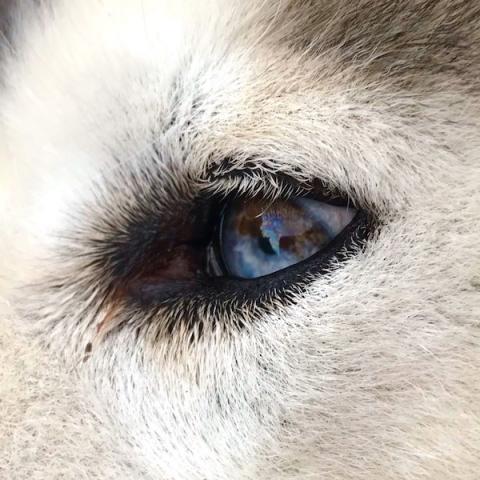Rabies
Rabies is a contagious and deadly disease. The rabies virus mainly spreads through the spit or saliva of infected animals when they bite or scratch another animal or human. Any contact with the saliva, brain, or nervous tissue of an infected animal can be dangerous.
Learn how to help prevent rabies, and what to do if you suspect an animal is sick.

Did you know?
An animal can spread rabies even if it appears healthy. For example, dogs can have the rabies virus in their saliva for up to 10 days before they show symptoms.
If you have been bitten or scratched by any animal, contact a nurse at your CMC right away.
Rabies
- Is contagious and deadly
- Is caused by a virus
- Attacks the nerves and brain
- Most commonly spreads through an animal bite or scratch (because of infected saliva)
- Spreads through infected animals like dogs, foxes, bats, skunks, raccoons, and wolves
- Is regularly found (or “endemic”) in Arctic foxes and red foxes
- Can also spread if infected saliva touches your eyes, the inside of your nose or mouth, an open sore, or if you touch the infected animal's body without proper personal protective equipment
How to protect yourself and your community
- Get your dogs vaccinated against rabies every year if they are 3 months old or more
- Where the risk is considered very high, the vaccine can be given to a puppy as young as 2 months, but they will need another dose 1 month later
- Cats can also be vaccinated
- Report all dog scratches and bites to a nurse at your CMC
- Do not let your dogs or cats roam outside freely without supervision
- Securely dispose of garbage (including carcass remains) that may attract dogs or wild animals
- Keep away from fox or wolves
- If you see a sick-looking dog or animal, stay away and call your Public Safety Officer right away
- Never touch dogs that have symptoms of rabies (dead or alive)
- Never touch wild animals that can carry rabies, like foxes
- Only trained animal control workers with personal protective equipment can handle the body of dead animals at risk of rabies

Did you know?
Rabies is deadly from the moment an infected person has general symptoms.
If you have been bitten or scratched by an animal, go and see a nurse or doctor at the local clinic immediately (and if possible, on the same day). They will assess your exposure, and if necessary (in consultation with Public Health and MAPAQ) will provide you with rabies post exposure prophylaxis, which can prevent rabies.
Don’t wait to report. The sooner you are treated, the more effective it will be.
Call the Public Safety Officer or Animal Control Officer immediately if you see a dog that:
- Is vomiting and eating and/or drinking less than usual
- Has weak or paralyzed back legs
- Is staggering, walking or moving abnormally
- Has their head low, a loose jaw, or abnormal facial expression
- Has an obvious change in behavior (for example, no longer afraid of strangers, aggressive, lethargic or slow)
- Has excessive drooling
- Is attacking people (and other animals or objects) and biting them, and/or biting themselves repeatedly
- Is making unusual barks or sounds
If your dog is diagnosed with rabies
See the nurse or doctor in your local CMC, as you may need to get rabies post-exposure prophylaxis treatment, even if you were not bitten or scratched.
Rabies vaccines work! Prevention through yearly vaccination of dogs and cats reduced rabies cases over 99%.
Unvaccinated animals are a risk to human health and the health of other animals. It is your responsibility to make sure your pet is up to date with its shots.


